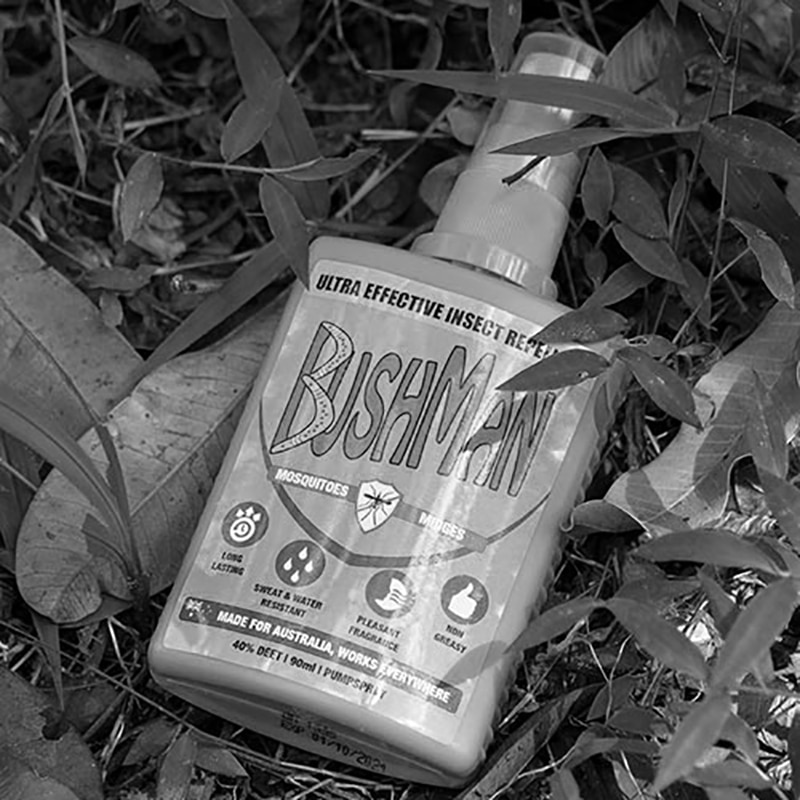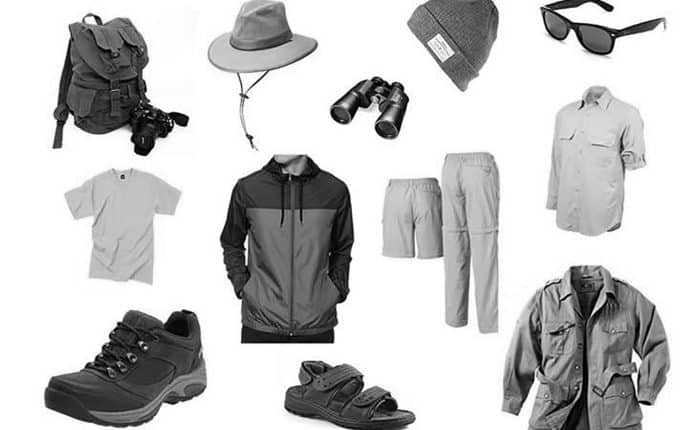The Ultimate Safari Packing List for an Unforgettable Adventure in Tanzania
Embarking on a thrilling safari adventure in Tanzania is a dream for many nature enthusiasts and wildlife lovers. Picture yourself surrounded by vast plains, witnessing breathtaking sunsets, and encountering majestic creatures up to close. But before you jet off on this unforgettable journey, ensuring you have the right gear is essential. That’s where our ultimate safari packing list for Tanzania safari comes in. We’ve curated a comprehensive guide, combining practicality, comfort, and style, to help you make the most of your Tanzanian safari experience. From clothing and footwear to essential equipment and accessories, we’ve got you covered. Whether you’re planning a luxury safari or a budget-friendly backpacking trip, our expert tips and recommendations will help you pack smartly and enjoy every moment of your adventure. So, get ready to roam the vast plains, capture stunning wildlife moments, and create memories that will last a lifetime with our ultimate packing list for safari in Tanzania.
Essential Clothing for a Safari

When it comes to what to pack for a safari in Tanzania, comfort and functionality should be your top priorities. The key is to dress in layers to adapt to changing weather conditions and be prepared for both hot days and chilly nights. Here are some essential clothing items to consider:
- Lightweight, breathable shirts: Opt for loose-fitting, long-sleeved shirts made of lightweight and breathable fabric to protect yourself from the sun and pesky insect bites. Neutral colors like khaki, beige, or olive green are ideal for blending in with the natural surroundings.
- Long pants and shorts: Pack a mix of long, lightweight pants and shorts for maximum versatility. Long pants will protect your legs from the sun, while shorts are perfect for hot afternoons. Consider convertible pants that can be zipped off to convert into shorts for added convenience.
- Sweater or light jacket: Evenings and early mornings on safari can get chilly, so it’s essential to pack a lightweight sweater or jacket. Opt for something that can be easily layered over your shirts or worn alone when the temperature drops.
- Sun hat and sunglasses: Protecting yourself from the strong African sun is crucial. Pack a wide-brimmed hat to shield your face and neck, and don’t forget a good pair of sunglasses to protect your eyes from harmful UV rays.
- Swimwear: If your safari includes a visit to Zanzibar or any other coastal areas, packing swimwear is a must. Tanzania boasts beautiful beaches and crystal-clear waters, so taking a dip in the ocean is a fantastic way to cool off after a day of wildlife spotting.
- Undergarments and socks: Ensure you have enough underwear and socks for the duration of your safari. Opt for moisture-wicking fabrics to keep you comfortable and minimize odor.
Remember, when packing for Tanzania safari, pack light and prioritize functionality over fashion. Stick to neutral colors that won’t attract unwanted attention from wildlife and avoid bright colors that may disturb the animals. Layering is key to adapt to changing temperatures throughout the day.
Footwear for a Safari
Choosing the right footwear for your safari adventure is crucial as you’ll be spending plenty of time on your feet, exploring the African wilderness. Here are some footwear options to consider:
- Comfortable walking shoes: Invest in a sturdy pair of comfortable walking shoes or hiking boots. Look for shoes with good ankle support, grip, and cushioning to ensure your feet stay comfortable during long walks and game drives.
- Sandals or flip-flops: In addition to your walking shoes, pack a pair of sandals or flip-flops for relaxing at your accommodation or for use at the beach. They’re also handy for quick trips to the restroom during game drives.
- Sock liners and hiking socks: To prevent blisters and keep your feet dry, pack a few pairs of sock liners to wear under your hiking socks. Opt for moisture-wicking, breathable socks that provide cushioning and support.
- Gaiters: If you’re planning to venture off the beaten path or explore areas with dense vegetation, consider packing gaiters. Gaiters will protect your legs from thorns, insects, and other potential hazards.
- Waterproof shoes: Depending on the season and the specific safari activities you have planned, it may be worth investing in a pair of waterproof shoes. This will ensure your feet stay dry during rainy days or when crossing water bodies.
Remember to break in your new shoes before your safari to avoid discomfort or blisters. It’s also a good idea to add moleskin or blister plasters to your Tanzania safari packing list in case of any foot issues during your trip.
Protective Gear and Accessories
When it comes to protective gear and accessories, there are a few essential items that will enhance your safari experience and keep you safe. Here’s what you should consider packing:
- Binoculars: Spotting wildlife from a distance is a thrilling part of any safari. Packing a good pair of binoculars will allow you to observe animals in their natural habitat without disturbing them.
- Camera and lenses: Documenting your safari adventure through photography is a must. Invest in a good DSLR or mirrorless camera with a versatile zoom lens to capture stunning wildlife moments up close.
- Lens cleaning kit: Safaris can be dusty, and your camera lens may require frequent cleaning. Pack a lens cleaning kit to ensure your photographs remain clear and free from smudges.
- Portable charger and extra batteries: Keeping your electronics charged while on safari can be a challenge. Pack a portable charger to ensure your camera, phone, and other devices stay powered throughout the trip. Additionally, bring extra batteries for your camera to capture those once-in-a-lifetime moments.
- Headlamp or flashlight: A headlamp or flashlight is essential for navigating your way around your accommodation at night or during early morning game drives. It’s also handy for reading maps or books in low-light conditions.
- Sunscreen and insect repellent: Protecting your skin from the harsh African sun and pesky insect bites is vital. Pack a high SPF sunscreen and a reliable insect repellent to ward off mosquitoes and other bugs.
- travel adapter: Tanzania uses Type D and Type G power outlets, so make sure to pack a travel adapter to charge your devices. It’s also advisable to pack a surge protector to safeguard your electronics from power surges.
Remember to pack these items in a sturdy and waterproof bag to protect them from dust, moisture, and potential damage during your safari.
Packing for Different Weather Conditions
Tanzania’s weather can vary depending on the region and the time of year you visit. It’s important when selecting what to pack for african safari Tanzania to pack accordingly in order to ensure you’re prepared for different weather conditions. Here’s what you should consider:
- Rain jacket or poncho: If you’re visiting during the rainy season (March to May and November to December), packing a lightweight rain jacket or poncho is essential. This will keep you dry during sudden downpours and allow you to continue your safari activities without interruption.
- Lightweight sweater or fleece: Evenings and early mornings can get chilly, especially during the dry season (June to October). Packing a lightweight sweater or fleece will provide an extra layer of warmth when needed.
- Hat and scarf: Besides protecting yourself from the sun, a wide-brimmed hat and a lightweight scarf can provide some relief from the dust during game drives.
- Sweat-wicking clothing: If you’re visiting during the hot and dry season, sweat-wicking clothing made of breathable fabrics like nylon or polyester will help keep you cool and comfortable.
- Packable rain cover for your bag: To protect your belongings from rain or dust, consider investing in a packable rain cover for your backpack or duffel bag.
- Waterproof dry bag: If you plan on participating in water-based activities or visiting coastal areas, a waterproof dry bag will keep your valuables and electronics safe and dry.
Research the weather patterns of the specific regions you’re planning to visit in Tanzania and use this in curating what you intend on packing for safari in Tanzania. Layering is once again crucial to adapt to changing temperatures throughout the day.
Important Documents and Paperwork
Before embarking on your Tanzanian safari, make sure to gather and organize all the necessary documents and paperwork. Here’s a checklist of what to pack for Tanzania safari particularly regarding paperwork and important documents:
- Passport: Ensure that your passport is valid for at least six months beyond your intended departure date from Tanzania. Check the expiration date and make a copy of the main page to keep in a separate location.
- Visa: Depending on your nationality, you may need a visa to enter Tanzania. Check the visa requirements well in advance and apply for your visa if necessary.
- Yellow fever certificate: Tanzania requires a yellow fever vaccination certificate for travelers arriving from countries with a risk of yellow fever transmission. Make sure to carry your certificate with you.
- Travel insurance: It’s highly recommended to have travel insurance that covers medical expenses, trip cancellation or interruption, and lost or stolen belongings. Keep a copy of your insurance policy and emergency contact numbers with you.
- Flight tickets and itinerary: Print out your flight tickets and have a copy of your complete itinerary, including accommodation details and contact information.
- Driver’s license and international driving permit: If you plan on driving in Tanzania, make sure to have a valid driver’s license from your home country and an international driving permit.
- Emergency contact numbers: Keep a list of emergency contact numbers, including your country’s embassy or consulate in Tanzania, your tour operator, and your accommodation.
Store all these documents and paperwork in a secure folder or wallet and keep them with you at all times. It’s also a good idea to have digital copies stored on your phone or in cloud storage as a backup.
Medications and First Aid Kit

Having a well-equipped first aid kit and essential medications is crucial for any travel adventure, including safaris. Here’s a list of items to include in your safari first aid kit:
- Prescription medications: If you take any prescription medications, ensure you have an ample supply to last throughout your trip. It’s essential to carry them in their original packaging, along with a copy of the prescription.
- Over-the-counter medications: Pack a variety of over-the-counter medications to address common travel ailments such as headaches, upset stomachs, allergies, and motion sickness. Include pain relievers, antidiarrheal medication, antihistamines, and any other medications you may typically use.
- Insect repellent and after-bite cream: Mosquitoes and other bugs can be prevalent in safari areas. Pack insect repellent containing DEET or another effective ingredient, as well as after-bite cream or soothing lotion to relieve itching and irritation.
- Bandages and wound dressings: Include a variety of bandages, adhesive tape, and sterile wound dressings to treat any minor cuts, scrapes, or blisters that may occur during your safari.
- Antiseptic wipes and hand sanitizer: To maintain good hygiene while on safari, pack antiseptic wipes and hand sanitizer to clean your hands and surfaces when soap and water are not readily available.
- Tweezers and small scissors: These tools are handy for removing splinters, thorns, or ticks and for cutting bandages or clothing if needed.
- Sunburn relief and lip balm: If you spend a lot of time outdoors, sunburns can happen. Pack aloe vera gel or another sunburn relief product to soothe any sunburns, as well as lip balm with SPF to protect your lips from the sun.
Remember to consult with your healthcare provider or a travel clinic before your trip to discuss any specific health concerns or necessary vaccinations for travel to Tanzania.
Electronics and Photography Equipment
Capturing the mesmerizing landscapes and incredible wildlife encounters during your Tanzanian safari is a must. Here’s a list of electronics and photography equipment to consider packing:
- DSLR or mirrorless camera: Invest in a good-quality DSLR or mirrorless camera to capture high-resolution photos of wildlife and landscapes. When deciding what to pack for safari in Tanzania, make sure to also include a versatile zoom lens for different shooting scenarios.
- Extra camera batteries and memory cards: Safaris can be long and demanding on your camera’s battery life. Pack at least one extra battery and several high-capacity memory cards to ensure you never miss a shot.
- Camera cleaning kit: Dust and dirt can easily accumulate on your camera gear during a safari. Pack a camera cleaning kit containing a blower brush, microfiber cloth, and lens cleaning solution to keep your equipment in top condition.
- Tripod or monopod: For steady shots and long-exposure photography, pack a lightweight tripod or monopod. This will help you stabilize your camera and prevent blurry images.
- GoPro or action camera: If you want to capture unique perspectives or record your safari adventures, consider packing a GoPro or action camera. These compact devices are perfect for mounting on a vehicle or wearing on your body.
- Portable hard drive or laptop: With the high-resolution images and videos you’ll be capturing, it’s essential to have a reliable backup solution therefore, your list of what to pack on safari Tanzania should include a portable hard drive or laptop to transfer and store your files safely.
- Smartphone and binocular adapter: If you don’t have a dedicated camera, a smartphone with a high-quality camera can still capture impressive shots. Consider purchasing a binocular adapter to attach your smartphone to your binoculars for long-distance photography.
Remember to pack these electronics and photography equipment in protective cases or bags to keep them safe from dust, moisture, and potential damage during your safari.
Tips for Packing Efficiently for a Safari in Tanzania
Packing efficiently for a safari can make a significant difference in your overall experience. Here are some tips to help you maximize your space and make the most of your packing.
1. Check luggage restrictions
Different airlines and safari operators may have specific luggage restrictions, particularly for small aircraft transfers to remote safari destinations. Make sure to check the weight and size limitations for both checked and carry-on luggage to avoid any last-minute surprises or extra fees.
2. Pack lightweight and multipurpose items
Opt for lightweight, multipurpose items that can serve multiple functions. For example, a sarong can be used as a towel, a scarf, or even a makeshift picnic blanket. Choose clothing items that can be easily mixed and matched to create different outfits without taking up too much space in your luggage.
3. Roll your clothes
Rolling your clothes instead of folding them can save a significant amount of space in your suitcase or backpack. It also helps prevent wrinkles and makes it easier to find specific items without unpacking your entire bag.
4. Use packing cubes or compression bags
Invest in packing cubes or compression bags to further maximize your packing space. These handy organizers allow you to separate different types of clothing and compress them to create more room in your luggage. They also help keep your belongings organized throughout the trip.
5. Don’t overpack
Remember, you don’t need to bring your entire wardrobe on a safari. Stick to the essentials and pack only what you know you’ll wear. Most lodges and camps offer laundry services, so you can easily refresh your clothing during your stay. Focus on comfort, practicality, and versatility when selecting your outfits.
Conclusion: Enjoy Your Unforgettable Safari Experience in Tanzania
As you prepare for your safari adventure in Tanzania, remember to pack smartly and efficiently. Follow our ultimate safari packing list Tanzania guide, which includes essential clothing, snacks and drinks, and additional items to consider. Don’t forget to prioritize comfort, practicality, and style when selecting your safari gear. With the right equipment and accessories, you’ll be able to fully immerse yourself in the beauty of the Tanzanian wilderness and create memories that will last a lifetime. So, get ready to witness incredible wildlife, embrace the enchanting landscapes, and embark on an unforgettable journey through the heart of Africa. Happy safari packing!
For more articles related to Things to Do in Tanzania (Zanzibar), click here!


































